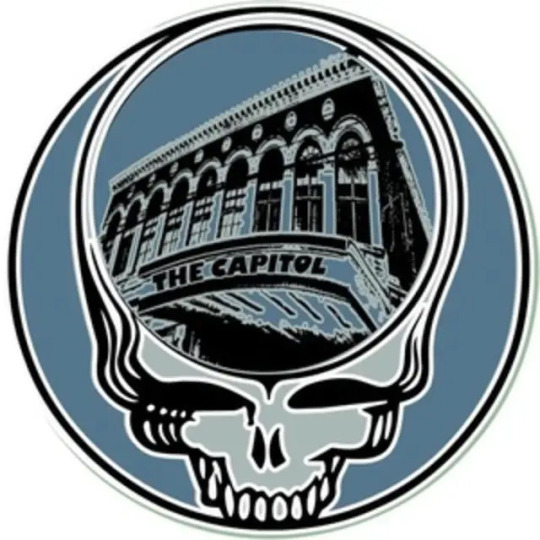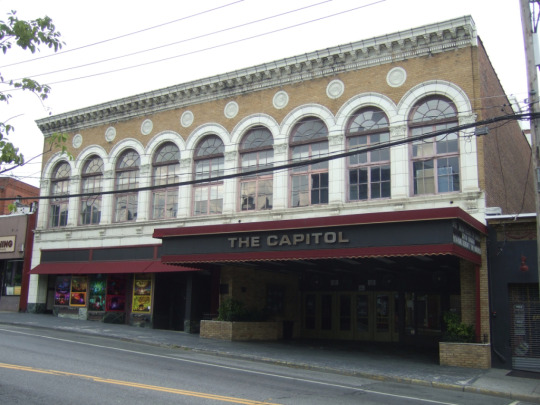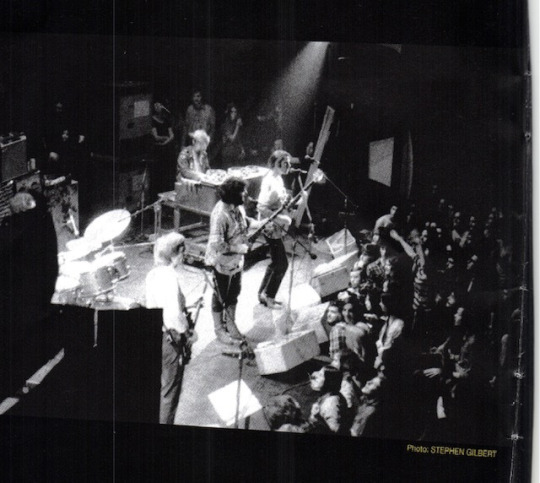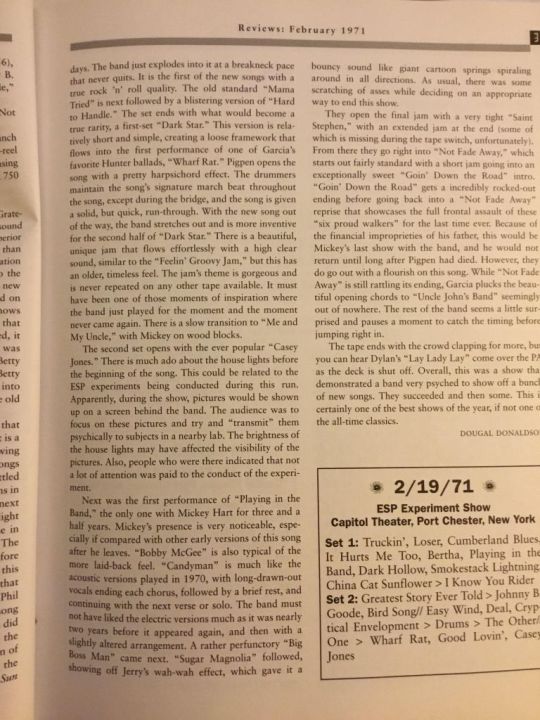#this is bothering me so much esp with how i think much less intriguing details get elevated to the apocalypse status
Explore tagged Tumblr posts
Text
Something that's been bothering me for a while, especially with every detail in current season getting so much scrutiny...
The thing is, THIS

is NOT the same outfit as THIS

Like, not even a little bit. This is to top the generally different vibe Fifteen has in the second photo (which comes earlier in the episode), and I just wonder what to make of it...
Like, are those two different occasions? For the record, Ruby's clothes change too across the scene, but given that she's performing she probably has a wardrobe at the locale? And the decorations are sure christmasy all the time? Did Fifteen walk in in a fedora, took a moment to look around ominously, and then bolted to the TARDIS for a slayer kilt? Or did he do a clothes swap with a slayer kilt rando in the bathroom?
OR is it future Fifteen visiting his own timeline for the moment Susan Twist first appeared just when he first med Ruby?
#this is bothering me so much esp with how i think much less intriguing details get elevated to the apocalypse status#doctor who#doctor who series 14#the church on ruby road#the doctor#fifteenth doctor#ncuti gatwa#ruby sunday#millie gibson#susan twist#dw meta#kinda more like hey that's a thing that nobody's talking about
60 notes
·
View notes
Text
Grateful Dead Monthly: Capitol Theater – Port Chester, NY 2/18/71

Fifty years ago, on Thursday, February 18, 1971, the Grateful Dead played a concert at the Capitol Theater in Port Chester, New York.

The Capitol Theater was designed by noted architect Thomas W. Lamb. It opened in 1926 as a vaudeville venue and movie palace with a capacity around 2,000. The Cap remained a cinema until 1970, when renovations transformed it into a performance space. Port Chester is thirty-five (or so) miles north and east of NYC, very close to Connecticut, so it was a nice in-betweeen stop for rock acts, including Pink Floyd, Janis Joplin, Traffic, Parliament-Funkadelic, and, obviously, the Good Ol’ Grateful Dead.

The Dead first visited the Cap for a two-night run of A/B sets in March 1970. They returned for a six-night run in February 1971.

In its post about 2/18, the Grateful Dead of the Day blog provided an overview:
These six shows at the Capitol Theater mark a transitional point for the band, which the new tunes partly evidence. The Dead had just come off their most commercially successful year to date with both Workingman’s Dead and American Beauty selling well the previous year, bringing new fans and embodying a new sound. But the boys never stood still musically, and they went into 1971 looking to continue to evolve. Pig was also becoming less and less of a presence in the mix as he played the organ and sang more infrequently. Pig’s reduced role pushed the Dead even further away from the psychedelic sound and deep blues that had been the very core of their sixties sound.
(There’s also some stuff online about the six shows being an LSD ESP experiment. Super heady, and I couldn’t be bothered to investigate much because neither acronym is in my personal bailiwick. If you’re into either/both, check out this website.)
2/18 was drummer Mickey Hart’s last show with the band until 10/20/74. Dennis McNally, GD publicist and author of A Long Strange Trip, writes that Mickey was distraught that his father Lenny, the band’s money manager, had embezzled $150,000, and had to be hypnotized before the show. He returned to California afterwards, and Bill Kreutzmann was the sole rhythm devil for more than three years.

2/18 is famous for debuts – Bertha, Loser, Greatest Story Ever Told, Johnny B. Goode, Wharf Rat, and Playing in the Band. The best song, however, isn’t any of those; it’s not even a song, but rather a noodly section toward the end of the first set’s Dark Star > Wharf Rat > Dark Star sandwich. The Beautiful Jam remains one of the Dead’s most enduring moments, so much so that it was included in the massive five-disc, career-spanning box set So Many Roads. Here’s how the Capitol Theater’s website describes the jam:
The biggest highlight of the night is the “Beautiful Jam” that took place during Dark Star > Wharf Rat > Dark Star. Not only did it set the mood for the night, it set the mood for the year. It encompasses everything that the Grateful Dead was during 1971. From the blissful confidence to the intriguing mysticism, this segment is a definitive moment in Grateful Dead history. When radio personality David Gans played the jam for Phil Lesh in 1997, it brought tears to his eyes. To this day, it is revered by Deadheads across the world – a moment in time that is etched in Capitol Theatre history forever.
YouTube has audio of Phil’s reaction.
And the Grateful Dead Guide blog has a piece about ’71 Dark Stars that breaks down the entire segment in painstaking detail:
The first Dark Star of ’71 is one of the most unusual – for starters, it’s the only Star with Mickey Hart, and the last time we’ll hear him playing that guiro (or ‘scratcher’) in the intro jam. Not only that, but there’s another instrument tinkling like little bells throughout, giving this Star a very distinctive atmosphere. I used to think this was Mickey Hart on glockenspiel (something we’d heard in the 11/8/70 Star) – but it turns out it’s actually Ned Lagin on clavichord! His first show with them had been the Boston 11/21/70 show (where he can’t be heard); now that they were in the area again, he found himself onstage again. (As Lagin said, “I brought my clavichord down precisely to do acoustic music with Jerry. And I sat in the first night…. I did not sit in after the first night because everyone was adjusting to Mickey’s departure from the band… Jerry and I jammed during the days, clavichord and acoustic guitar.” You can also hear him occasionally later in the set, as in Candyman.)
Dark Star comes early, in the first set – the crowd screams when they recognize it. Garcia loses no time after the intro in taking the music to a more ‘mystical’ level with a few carefully chosen high notes. The feeling is calm, meditative – but the jam flows like a liquid surge into a brief burst of ecstasy after just a couple minutes, provoking more screams from the audience. Garcia quickly calms it down for the verse, which he sings very emphatically. (Then Weir completely blows his usual post-verse notes!) Rather than going straight to a space, the band tests the waters for a bit, Garcia trying a couple different approaches as the others drop out. This is where Lagin enters the jam, with some ringing chimes. Garcia finds a high note he likes and stays there (with one delightful peal of feedback). The music slides into a luscious harmonic space (Weir echoing Lagin’s chimes), but Garcia quickly bursts into the Wharf Rat chords, and the others follow – the crowd realizes they’re in another song now, and cheers. This is certainly one of the most dramatic Wharf Rat entrances.
The sad tale of August West unfolds for the first time. Garcia’s singing is strong, and though Wharf Rat has a few rough edges in its first outing, there’s so much conviction in the song, it’s still spine-chilling. (It’s also uncharacteristic for a Dead song, in that Garcia just strums the chords throughout, while Weir plays the melodic part.) The little solo at the end morphs before our ears into a Dark Star space, and with a little twist of the riff Garcia brings us back to the Dark Star theme. The music speeds up, and they start a new melodic jam around two alternating chords. (Many people say this is a Tighten Up jam due to the chord resemblance – but it’s not.) Garcia uses a breathtakingly piercing tone; and his playing is especially ethereal with some swoops of harmonized feedback. But Weir and Lesh also play perfectly in support, the music guiding them, all playing with one voice. The jam goes through several variations, pausing and resuming – once Garcia has had enough, he heads straight to the second Dark Star verse while the audience whistles. As the outro slowly unwinds, everyone wonders what will come next – of all things, Weir starts Me & My Uncle. After this, the band decides it’s time for a break – Weir announces, “We’re going to take a break, and you can watch our dust.”
GD of the Day isn’t too complimentary of Bobby’s vocals in Playing, and calls that song the “lowlight of the evening.” It’s not that bad, tbh. There’s a nice quip, too, in the intro to Greatest Story. Bobby says that “Mickey wants to call this one ‘The Pump Man,’ for reasons of his own.” I had that on a tape recorded from Gans’ Grateful Dead Hour back in college. Always fun to revisit. And the Saint Stephen > NFA > GDTRFB > NFA segment has some satisfying schlap.

ECM did lotsa legwork for this post, including photos of the Taper’s Compendium pages about this show.


(Thanks, buddy. As always, couldn’t and wouldn’t do this without you.)
So, listeners, you have a couple of options. 2/18/71 is now an official release – it’s the live part of the American Beauty 50th Anniversary Deluxe Edition.

Here’s a Spotify widget to just the show.
According to LMA poster ghostofpig, 2/18/71 is the first “Betty Board” – i.e., the first soundboard recording by legendary engineer Betty Cantor-Jackson. Transport to the Charlie Miller remaster HERE.
2/19/71 is also an official release – Three from the Vault.

That one’s not on Spotify. Idk why. It’s not as good, but you can find it, and rest of the run, on the LMA. You lazy hippies will have to figure out how to get there

More soon.
JF
from WordPress https://ift.tt/3jYHerv via IFTTT
0 notes